Monthly Archives: July 2021
 My grand-niece, Zoey Iverson is an active six-year-old girl with a vivid imagination. Zoey is into sea animals like octopus, jelly fish, and mermaids. I’m quite sure that her little girl’s mind can imagine herself diving and swimming beneath the ocean…looking for octopuses and jelly fish, but secretly hoping to find a real mermaid. She might even decide to bring home a starfish or two, because lets face it she is swimming far beneath the ocean and this is all make believe anyway, right.
My grand-niece, Zoey Iverson is an active six-year-old girl with a vivid imagination. Zoey is into sea animals like octopus, jelly fish, and mermaids. I’m quite sure that her little girl’s mind can imagine herself diving and swimming beneath the ocean…looking for octopuses and jelly fish, but secretly hoping to find a real mermaid. She might even decide to bring home a starfish or two, because lets face it she is swimming far beneath the ocean and this is all make believe anyway, right.
Like most six-year-old girls, Zoey loves Barbie, and that makes Barbie Live TV on YouTube a big deal. When Barbie was invented, somebody knew little girls 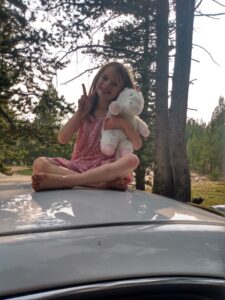 and had the right idea, because Barbie has the glamor and the accessories to make every little girl’s dreams come true, but it’s not the only thing Zoey likes to do. Zoey is learning to ride her bicycle. She is using training wheels, but we all know that doesn’t last long. Kids figure out their bicycle and the freedom it provides pretty quickly. Zoey also love to swim in the pool in the back yard. With the heat of the summer, the backyard pool is the best place to be, and this summer has been pretty hot.
and had the right idea, because Barbie has the glamor and the accessories to make every little girl’s dreams come true, but it’s not the only thing Zoey likes to do. Zoey is learning to ride her bicycle. She is using training wheels, but we all know that doesn’t last long. Kids figure out their bicycle and the freedom it provides pretty quickly. Zoey also love to swim in the pool in the back yard. With the heat of the summer, the backyard pool is the best place to be, and this summer has been pretty hot.
Zoey is headed for 1st grade next year. She will be the youngest student in her class, but she is excelling very fast, so she will not be the bottom of the class by any stretch of the imagination. Zoey is a very smart girl, and loves to learn. She loves writing, practicing her letters, and…coloring everything…even the walls. Yikes!! Its a good thing most crayons wipe off easily, and there re good cleaners to help. After all, an artist needs her canvas…wherever it may be. Imagination simply cannot be corralled!!

With summer, the family has been camping and enjoying the scenery. With the Big Horn Mountains nearby, and so many other beautiful spots in Wyoming, the are lots of camp grounds to choose from. Zoey loves to catch bugs with her bug catcher, go swimming in the creeks, and spend time helping her older brother, Lucas, who is special needs. Zoey has been instrumental in his development. We are all very proud of her. She loves Lucas so much, and he loves her. That might be the reason she is doing so well in school. Teaching others is a great way to learn. Today is Zoey’s 6th birthday. Happy birthday Zoey!! Have a great day!! We love you!!
 In years gone by the average person couldn’t afford many books, if any books. All books were hardback, and expensive to purchase. Most people had to make due with checking out a book from the library. taking a book with you to read on a train wasn’t feasible either. They were heavy, large, and bulky. Now, most people wouldn’t think of a waddling, surprised-looking bird would be on the list of working-class heroes…if there is such a thing, but somewhere in the world of books, it is a penguin that changed the lives of many…at that time anyway. The penguin still stares out blankly from the covers of Penguin books published today. Change is constant, and today, many people again don’t won books, because everything is going digital…but that is a story for another day.
In years gone by the average person couldn’t afford many books, if any books. All books were hardback, and expensive to purchase. Most people had to make due with checking out a book from the library. taking a book with you to read on a train wasn’t feasible either. They were heavy, large, and bulky. Now, most people wouldn’t think of a waddling, surprised-looking bird would be on the list of working-class heroes…if there is such a thing, but somewhere in the world of books, it is a penguin that changed the lives of many…at that time anyway. The penguin still stares out blankly from the covers of Penguin books published today. Change is constant, and today, many people again don’t won books, because everything is going digital…but that is a story for another day.
The story of Penguin Paperback Books is an interesting one. A man names Allen Lane was at the Exeter Railway Station heading home after having spent the weekend interviewing one Agatha Christie. As he prepared to board his train, he was looking around for something inexpensive to read on the ride home. There was simply nothing 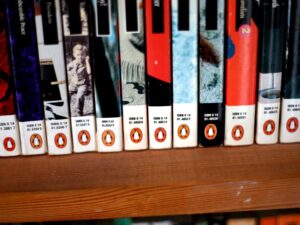 to be found…except reprints of Victorian novels and magazines. Lane was unimpressed, and he decided that the world needed a change. I’m not sure how the publishing companies felt about his plan, but then again, how well could their businesses be faring, if no one could afford their books.
to be found…except reprints of Victorian novels and magazines. Lane was unimpressed, and he decided that the world needed a change. I’m not sure how the publishing companies felt about his plan, but then again, how well could their businesses be faring, if no one could afford their books.
Once he was back in London, Lane decided to set up a company selling contemporary fiction cheaply. He had some ideas, and wanted a logo that was “dignified but flippant.” His secretary suggested a penguin. An employee was dispatched to the London Zoo, sketch pad in had, to draw a penguin. I don’t know if I think a penguin is “dignified,” but the idea seemed to serve the purpose it was intended to, and on July 30, 1935, the first books bearing the  ubiquitous penguin were published. The design was color coded, with orange for fiction, blue for biography, and green for crime. Each book cost sixpence, or $10.00 US. That seems like a lot of money for the time, considering that they sell for about that today, many years later. Still, there was the novelty of it all to consider. Leading the rollout were names like Ernest Hemingway, Andre Marois, and Agatha Christie (who may have inspired the idea in the first place).
ubiquitous penguin were published. The design was color coded, with orange for fiction, blue for biography, and green for crime. Each book cost sixpence, or $10.00 US. That seems like a lot of money for the time, considering that they sell for about that today, many years later. Still, there was the novelty of it all to consider. Leading the rollout were names like Ernest Hemingway, Andre Marois, and Agatha Christie (who may have inspired the idea in the first place).
Traditional publishers turned up their noses at the popular paperback revolution, but that didn’t stop Penguin selling millions of books to avid readers of A Farewell to Arms and The Mysterious Affair at Styles in its first years. I suppose they thought their sales would be hurt by these “disposable” versions of their great books. I wonder what they would think of the Kindle versions and the Audible versions. I would imagine they would really be cringing, but change really is the only constant.

 My grand-niece, Raelynn Masterson, is growing up…right before our very eyes. Suddenly, Raelynn is 18 years old…an adult. Covid had an effect on Raelynn, like it did every student, except those who were exclusively online. Many students have chosen to do things differently now, and Raelynn is one of those. So, this past year, she switched from Natrona County High School (NCHS), to our third high school, Roosevelt High School, and not only does she love it, but it has been the best for her learning style. NCHS is a large school, and so there are larger classes, meaning that each student has less individual time with the teachers. The online classes showed Raelynn that the one-on-one time was important to her. NCHS also has longer class times, and alternating daily schedules, where Roosevelt uses the old method of the same daily schedule and shorter class times. Either schedule works, but Raelynn’s personal preference is the old style.
My grand-niece, Raelynn Masterson, is growing up…right before our very eyes. Suddenly, Raelynn is 18 years old…an adult. Covid had an effect on Raelynn, like it did every student, except those who were exclusively online. Many students have chosen to do things differently now, and Raelynn is one of those. So, this past year, she switched from Natrona County High School (NCHS), to our third high school, Roosevelt High School, and not only does she love it, but it has been the best for her learning style. NCHS is a large school, and so there are larger classes, meaning that each student has less individual time with the teachers. The online classes showed Raelynn that the one-on-one time was important to her. NCHS also has longer class times, and alternating daily schedules, where Roosevelt uses the old method of the same daily schedule and shorter class times. Either schedule works, but Raelynn’s personal preference is the old style.
Recently, Raelynn started a new job, her second, at Walgreens, which is where her mom, Dustie Masterson works, but not they are at opposite stores. Raelynn is at the westside and Dustie at the eastside store. Raelynn got tp work once at her mom’s store, and mid-August, Dustie is going to help out at Raelynn’s store. They get along great, so working together, even if only occasionally is a lot of fun. They both have the same sense of  humor, and they don’t get embarrassed about some of the goofy things I (and Dustie) have posted online about them. They both love to be silly, and it’s rather a no-holds-barred situation when it comes to teasing. Being a “good sport” is a must when they are teasing each other.
humor, and they don’t get embarrassed about some of the goofy things I (and Dustie) have posted online about them. They both love to be silly, and it’s rather a no-holds-barred situation when it comes to teasing. Being a “good sport” is a must when they are teasing each other.
Raelynn has not been in a hurry to learn to drive, in fact she didn’t even start to learn until this past year. She is taking it slow to make sure her really has a good handle on it. There is no sense in rushing and then immediately having your first accident. There are a few kids out there who start out driving like “an old lady,” and never really change that. I think I would rather see a prudent new driver, than one who scares everyone who is in the car with them.
Turning eighteen and graduating from high school next year, Raelynn is looking to the future. She knows that she wants to get her own apartment after high school. She already has a friend in mind to be her roommate, so that’s good. She also plans to go to college. She is a good student, and she wants it all. She has a couple of ideas on what she wants to study, but nothing that has been nailed down enough to say for sure. Nevertheless, she is planning ahead, and that makes Dustie and Rob (Raelynn’s dad and Dustie’s husband) very proud.
Planning ahead is one thing. Having the cool things you want in life is another, and while Raelynn is saving and 
 planning, she did spend that whole first check on…well, her mom doesn’t really know, but stuff she needed, apparently!! Nevertheless, once Raelynn sets a goal, nothing is going to stop her. Dustie says, “She reminds me a lot of me, but much sweeter. She must get that from her dad! This year marks her as an adult but when I look at her I still see my first little miracle (quite literally) from God. He must have known better than me what I needed in my life.” I just couldn’t have said that any better. Today Is Raelynn’s 18th birthday. Happy birthday Raelynn!! Have a great day!! We love you!!
planning, she did spend that whole first check on…well, her mom doesn’t really know, but stuff she needed, apparently!! Nevertheless, once Raelynn sets a goal, nothing is going to stop her. Dustie says, “She reminds me a lot of me, but much sweeter. She must get that from her dad! This year marks her as an adult but when I look at her I still see my first little miracle (quite literally) from God. He must have known better than me what I needed in my life.” I just couldn’t have said that any better. Today Is Raelynn’s 18th birthday. Happy birthday Raelynn!! Have a great day!! We love you!!

 Millions of people visit Niagara Falls each year. It is a beautiful sight, and one you will never forget once you’ve seen it. The boats that take you close to the bottom of the falls guarantee a “rainy” ride. It all seems so safe…right? Well, maybe not always. On July 28, 1954, a huge section of Prospect Point observation area at the brink of the American Falls, collapsed in a pie shaped section. It’s something you would never expect, and yet when you think about it, erosion can happen when you mix water and dirt or rock. Combine that with Winter’s ice, and you get expansion. Now, when you think about it, can you see how the collapse might have happened, because I certainly can?
Millions of people visit Niagara Falls each year. It is a beautiful sight, and one you will never forget once you’ve seen it. The boats that take you close to the bottom of the falls guarantee a “rainy” ride. It all seems so safe…right? Well, maybe not always. On July 28, 1954, a huge section of Prospect Point observation area at the brink of the American Falls, collapsed in a pie shaped section. It’s something you would never expect, and yet when you think about it, erosion can happen when you mix water and dirt or rock. Combine that with Winter’s ice, and you get expansion. Now, when you think about it, can you see how the collapse might have happened, because I certainly can?
The collapse, when it came sent an estimated 185,000 tons of rock thundering into the Niagara River Gorge. Park officials worried that additional sections of Prospect Point would collapse before blasting operations could begin. Following the collapse, engineers and geologists conducted surveys to determine whether blasting would be necessary to stall further rock falls into the gorge. Two sections of Prospect Point were hanging precariously over the 170 foot gorge. Officials estimated that a new fall could send an additional 50,000 tons of rock into the gorge. Engineers appeared to be at a loss as to what to do about the huge pile of rocks now at the bottom of the gorge, as well. A few have said the view from the base of the American Falls has been marred by the mass of rock now laying at the base of the falls. They weren’t even sure if the elevator to the Maid of the Mist landing at the base of the American Falls could be re-opened.
For the sake of safety, Park officials temporarily erected a fence around the collapsed area to keep the curious bystanders away. Thousands of tourists were there that day. They witnessed the huge masses of rock tumbling into the gorge. It was the worst rock fall at Niagara Falls since January 17, 1931 when a huge section of the American Falls tumbled into the gorge. Engineers from the Niagara Frontier State Parks Commission estimate the size of the rock fall as 400 feet long from the lip of the gorge…50 feet wide and 150 feet deep. This included an estimated 20 feet off the Falls crest-line crashed to a point 70 feet down the face.
After the collapse, three giant boulders were silhouetted against the red and blue mist of the Niagara Falls night display. The boulders, some as huge as houses, lay in a jumbled mess beneath the rocks from which they had fallen. Because of the mist, it was hard to see the new scar on Niagara’s face from the lower river. The north face of the American Falls, however, now introduced a raw and torn face to the Canadian side. There would necessarily be some repairs. A face lift would be needed for the new observation area according to Andrew M. Anderson, Executive Secretary and Chief Engineer for the Niagara Frontier State Parks Commission. He also indicated that the new face would be smoothed off by engineers. A new sidewalk and guard rails would be constructed once the area was proven to be safe.
The elevator shaft and tunnel to the Maid of the Mist landing below the Falls although cracked, appeared to be in no danger according to maintenance workers. Cracks in the shaft and tunnel appeared only yesterday 
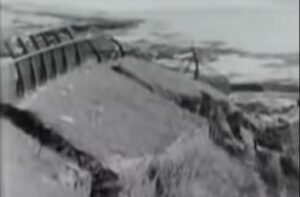 showed no signs of widening when checked last night. Water which had gushed from the crack earlier in the day had dwindled to just a trickle. Geologists examined the building that day and it reopened as soon as it was declared safe. Because so many were able to get pictures and videos of the collapse, some people even thought it was a publicity stunt.
showed no signs of widening when checked last night. Water which had gushed from the crack earlier in the day had dwindled to just a trickle. Geologists examined the building that day and it reopened as soon as it was declared safe. Because so many were able to get pictures and videos of the collapse, some people even thought it was a publicity stunt.
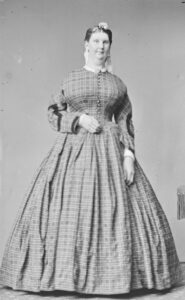
 Whether you prefer tall people or short people, you can’t help but be interested in the very tall or the very short. When I think of tall, I think of over 6’5”, but some people think of someone over 7’ tall. I suppose many people think that’s not so tall, but when you’re 5’2” tall, 6’5” seems very tall, and 7’ is a giant. The tallest person in recorded history was Robert Pershing Wadlow, also known as the Alton Giant and the Giant of Illinois. He was an American man who was irrefutably the tallest person in recorded history, and of that there is irrefutable evidence. He was born and raised in Alton, Illinois, a small city near Saint Louis, Missouri. Nevertheless, he did not marry the tallest woman. The tallest married couple ever recorded was Anna Haining Swan, who was 7’11” tall and Martin Van Buren Bates, who was 7’9” tall. The pictures of their wedding show people attending the wedding, who were probably quite tall, but they looked very short next to the Bates couple.
Whether you prefer tall people or short people, you can’t help but be interested in the very tall or the very short. When I think of tall, I think of over 6’5”, but some people think of someone over 7’ tall. I suppose many people think that’s not so tall, but when you’re 5’2” tall, 6’5” seems very tall, and 7’ is a giant. The tallest person in recorded history was Robert Pershing Wadlow, also known as the Alton Giant and the Giant of Illinois. He was an American man who was irrefutably the tallest person in recorded history, and of that there is irrefutable evidence. He was born and raised in Alton, Illinois, a small city near Saint Louis, Missouri. Nevertheless, he did not marry the tallest woman. The tallest married couple ever recorded was Anna Haining Swan, who was 7’11” tall and Martin Van Buren Bates, who was 7’9” tall. The pictures of their wedding show people attending the wedding, who were probably quite tall, but they looked very short next to the Bates couple.
It is believed that Anna Swan was born at Mill Brook, New Annan, Nova Scotia. At birth she weighed 16 pounds, which is a large baby. She was the third of 13 children, but all of the others were average height. Anna grew quite quickly, reaching 4’6″ by her fourth birthday. On her 6th birthday Anna was measured again. She stood 5′ 2″ tall, just an inch or two shorter than her mother. She stood 6′ 2″ tall and weighed 203 pounds on her 11th birthday. By her 15th birthday Bates was 7′ tall. She reached her full height of 7’11” three years later. Her feet measured 14.2 inches long.
Martin Van Buren Bates was born on November 9, 1837, and was known as the “Kentucky Giant.” By the time he as full grown, he was 7’9″ and weighing 380 pounds. Bates’ growth rate didn’t jump until the age of six or seven, but he was over 6′ tall and weighed over 200 pounds by the time he was twelve years old. He served in the Civil War, and returned to Kentucky after the war. Before the war, his first occupation was as a schoolteacher, but upon his return, he began travelling with a circus. When the circus was in Halifax Martin Van Buren Bates met another enormously tall person…Anna Swan. She was attending the circus, and was spotted by the management and hired on the spot. The giant couple became a touring sensation and eventually fell in love. They married on June 17, 1871, in Saint Martin-in-the-Fields in London, in a highly publicized wedding. The ceremony drew thousands of people, due to both the uncommonness of the spectacle and the good nature of the pair. Queen Victoria gave them two extra-large diamond-studded gold watches as wedding presents.
Martin and Anna moved to Ohio in 1872, settling in Seville. On May 19, 1872, Anna gave birth to a daughter, who weighed 18 pounds. She died at birth. The couple built a large house to accommodate themselves comfortably. Martin wanted to be a farmer. The family did well, but not in the area of children. A baby boy was 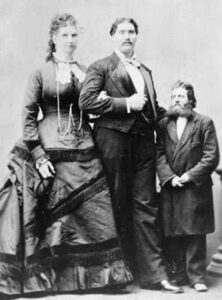
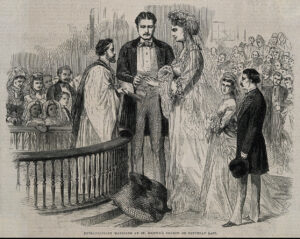 born on January 15, 1879. He weighed 23 pounds 9 ounces, and was 28′ long. He was posthumously awarded the world record according to the Guinness Book of World Records. Their son only lived 11 hours. Anna Bates died on August 5, 1888. Martin ordered a statue of her from Europe for her grave, sold the oversized house, and moved into the town. In 1889 he remarried, this time to a woman of normal stature, Annette LaVonne Weatherby and lived a mostly peaceful life until his death in 1919 of nephritis. He was buried beside his first wife and their son in Seville.
born on January 15, 1879. He weighed 23 pounds 9 ounces, and was 28′ long. He was posthumously awarded the world record according to the Guinness Book of World Records. Their son only lived 11 hours. Anna Bates died on August 5, 1888. Martin ordered a statue of her from Europe for her grave, sold the oversized house, and moved into the town. In 1889 he remarried, this time to a woman of normal stature, Annette LaVonne Weatherby and lived a mostly peaceful life until his death in 1919 of nephritis. He was buried beside his first wife and their son in Seville.
 James Edwin Wide had lost both his legs in a work accident years earlier, and so in 1880, when he came across a Chacma Baboon driving an oxcart while visiting a busy South African market, he saw a way to make his life easier. Wide was impressed with the skills, and so he decided to buy him. Having two peg-legs and working had been very difficult on Wide over the years, and finally he saw an end to years of hardship. Impressed by the primate’s skills, Wide bought him, named him Jack, and made him his pet and personal assistant. His original plan was to have Jack drive him on his half-mile commute to the train station. So the first thing he trained the Jack to do was push him to and from work in a small trolley. Soon, Jack was also helping with household chores, sweeping floors and taking out the trash. Jack was very good at his work, and he truly loved Wide, almost as if Wide was his child.
James Edwin Wide had lost both his legs in a work accident years earlier, and so in 1880, when he came across a Chacma Baboon driving an oxcart while visiting a busy South African market, he saw a way to make his life easier. Wide was impressed with the skills, and so he decided to buy him. Having two peg-legs and working had been very difficult on Wide over the years, and finally he saw an end to years of hardship. Impressed by the primate’s skills, Wide bought him, named him Jack, and made him his pet and personal assistant. His original plan was to have Jack drive him on his half-mile commute to the train station. So the first thing he trained the Jack to do was push him to and from work in a small trolley. Soon, Jack was also helping with household chores, sweeping floors and taking out the trash. Jack was very good at his work, and he truly loved Wide, almost as if Wide was his child.
While Jack was very good at his caregiving job, it was at the signal box Jack truly shined. The signal box was a system of manual switches operated in connection with the approaching trains whistles. As trains approached the  rail switches at the Uitenhage train station, they would toot their whistle a specific number of times to alert the signalman which tracks to change. By watching his owner, Jack picked up the pattern and started tugging on the levers himself. Jack was so smart. He was able to totally take over the signalman’s job that had been held by Wide. Soon, Wide was able to kick back and relax as his furry helper did all of the work switching the rails. According to The Railway Signal, Wide “trained the baboon to such perfection that he was able to sit in his cabin stuffing birds, etc, while the animal, which was chained up outside, pulled all the levers and points.”
rail switches at the Uitenhage train station, they would toot their whistle a specific number of times to alert the signalman which tracks to change. By watching his owner, Jack picked up the pattern and started tugging on the levers himself. Jack was so smart. He was able to totally take over the signalman’s job that had been held by Wide. Soon, Wide was able to kick back and relax as his furry helper did all of the work switching the rails. According to The Railway Signal, Wide “trained the baboon to such perfection that he was able to sit in his cabin stuffing birds, etc, while the animal, which was chained up outside, pulled all the levers and points.”
One day, as the story goes, an upper-class train passenger, looked out the window of the train and saw that a baboon, and not a human, was manning the gears. Of course, this brought outrage, and a complaint to the railway authorities. The authorities decided not to act in haste and fire Wide, decided to resolve the complaint by testing the baboon’s abilities. The result of that test was a group of astounded officials. “Jack knows the signal whistle as well as I do, also every one of the levers,” wrote railway superintendent George B Howe, who visited the baboon sometime around 1890. “It was very touching to see 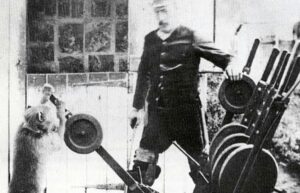 his fondness for his master. As I drew near they were both sitting on the trolley. The baboon’s arms round his master’s neck, the other stroking Wide’s face.”
his fondness for his master. As I drew near they were both sitting on the trolley. The baboon’s arms round his master’s neck, the other stroking Wide’s face.”
The complaint was disregarded and Jack was reportedly given an official employment number, and was paid 20 cents a day and half a bottle of beer weekly. Jack passed away in 1890, after developing tuberculosis. It was a sad day for all who knew him. Jack had worked the rails for nine years, without ever making a mistake. That shows that animals can be trained to do things in a responsible way, and do their job perfectly.
 As with any new form of transportation, the first accident is inevitable. There may have been train wrecks in other countries, but the first recorded railroad accident in United States history happened on July 25, 1832, when four people were thrown off a vacant car on the Granite Railway near Quincy, Massachusetts. The people were there by invitation, to watch the process of transporting large and weighty loads of stone. The victims were observing From a vacant car as the large were being loaded. Suddenly, a cable on the vacant car snapped, throwing them off the train and over a 34-foot cliff, one man was killed and the others were seriously injured. It was a fluke, and no one could possibly have known of expected such a break. I suppose that cables had not been used for the purposes they now were…loading large rocks and their duties on trains. Cables can fray and snap. That is just a fact of life. Death is a fact of life, and on that day, when the cable broke, the wagon containing Thomas B Achuas of Cuba was killed when the wagon derailed as he and three other tourists were taking a tour.
As with any new form of transportation, the first accident is inevitable. There may have been train wrecks in other countries, but the first recorded railroad accident in United States history happened on July 25, 1832, when four people were thrown off a vacant car on the Granite Railway near Quincy, Massachusetts. The people were there by invitation, to watch the process of transporting large and weighty loads of stone. The victims were observing From a vacant car as the large were being loaded. Suddenly, a cable on the vacant car snapped, throwing them off the train and over a 34-foot cliff, one man was killed and the others were seriously injured. It was a fluke, and no one could possibly have known of expected such a break. I suppose that cables had not been used for the purposes they now were…loading large rocks and their duties on trains. Cables can fray and snap. That is just a fact of life. Death is a fact of life, and on that day, when the cable broke, the wagon containing Thomas B Achuas of Cuba was killed when the wagon derailed as he and three other tourists were taking a tour.
While it was a setback, trains were, in fact, a matter of necessity, and the acceptance of railroads came quickly in the 1830s and beyond. By 1840 the United States had almost 3,000 miles of railway, which was more than the combined European total of only 1,800 miles. The railroad network expanded quickly in the years before the Civil War, and by 1860 the American railroad system had become a national network of some 30,000 miles.  Nine years later, transcontinental railroad service became possible for the first time. These were great successes, but they did not come without a price, and sometimes that price is very heavy.
Nine years later, transcontinental railroad service became possible for the first time. These were great successes, but they did not come without a price, and sometimes that price is very heavy.
When architect Solomon Willard arrived in Quincy, Massachusetts, in 1825, and discovered a granite ledge in a wooded area, he knew he had found the perfect raw material for what would become his most famous building, the Bunker Hill Monument. Willard envisioned a 221-foot tall monument with a 30 feet square base that would require some 6,700 tons of granite. Transporting the massive blocks of granite from the quarry to the site of construction presented a challenge. That’s where the train came in. Quincy was separated from Charlestown, where the monument would be erected, by 12 miles of swamp, forest, and farms. The granite needed to be delivered to Neponset River, four miles north, from where a barge would transport the stone through Boston Harbor to Charlestown. Willard wanted to move the stones to the Neponset River on sledges during winter, but engineer Gridley Bryant, suggested a more efficient method…a railroad.
With the support Boston businessman and state legislator Thomas Handasyd Perkins, Bryant ended up designing what would become the first, commercial railroad in the United states. Rather than steam locomotives, Bryant used horses to pull the railcars a distance of three miles from quarries to the Neponset  River. A single horse could pull three cars loaded with 16 tons of rock over wooden rails plated with iron. Later, the wooden rails were replaced with granite rails. The iron plates were retained.
River. A single horse could pull three cars loaded with 16 tons of rock over wooden rails plated with iron. Later, the wooden rails were replaced with granite rails. The iron plates were retained.
Although, Bryant benefitted from developments already in use on railroads in England, he did modify his design to allow for heavier, more concentrated loads and a three-foot frost line. The Granite Railway also introduced several important inventions, including railway switches or frogs, the turntable, and double-truck railroad cars. Gridley Bryant never patented his inventions, believing they should be for the benefit of all.

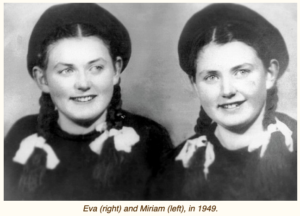 Approximately 3,000 twins were pulled from the masses on the ramp at Auschwitz, most of them were children; only around 160 of them survived. As the trains rolled into Auschwitz, the guards were trained to watch closely. They were looking for strong workers, the elderly, and the weak, and they were looking for twins…especially identical twins. The parents of these twins were thankful that they had twins…at first. They seemed to know that their twins would not be sent to the gas chambers, but they did not know that they would be taken away from them forever, and that they would be sentenced to a life of torture in the hands of a madman. The Nazis didn’t care about the feelings of the parents whose twins were yanked from their arms. They knew that Dr Josef Mengele wanted these twins for his medical experiments. Mengele wanted to find a way to cause more twin births to increase the Nazi world population. He also wanted to find a way to manipulate the traits twins had so that if they were blonde haired, a trait that supposedly meant that they were half Aryan. That said, he wanted to bring any problematic areas into line, such as the lack of blue eyes. He would inject chemicals into their eyes to try to turn their eyes blue. And that was just part of his insanely sadistic experimentation.
Approximately 3,000 twins were pulled from the masses on the ramp at Auschwitz, most of them were children; only around 160 of them survived. As the trains rolled into Auschwitz, the guards were trained to watch closely. They were looking for strong workers, the elderly, and the weak, and they were looking for twins…especially identical twins. The parents of these twins were thankful that they had twins…at first. They seemed to know that their twins would not be sent to the gas chambers, but they did not know that they would be taken away from them forever, and that they would be sentenced to a life of torture in the hands of a madman. The Nazis didn’t care about the feelings of the parents whose twins were yanked from their arms. They knew that Dr Josef Mengele wanted these twins for his medical experiments. Mengele wanted to find a way to cause more twin births to increase the Nazi world population. He also wanted to find a way to manipulate the traits twins had so that if they were blonde haired, a trait that supposedly meant that they were half Aryan. That said, he wanted to bring any problematic areas into line, such as the lack of blue eyes. He would inject chemicals into their eyes to try to turn their eyes blue. And that was just part of his insanely sadistic experimentation.
Ten-year-old Eva (Mozes) Kor and her twin sister, Miriam (Mozes) Zeiger, were one of these surviving sets of twins. The twins were born on January 31, 1934 into a Jewish farming family in the village of Portz in northern Transylvania, which was a part of Romania at the time, but later became a part of Hungary, which came under German military occupation in late World War II. Their family was deported to Auschwitz in late 1944, a fact which probably was to their advantage, because they were at Auschwitz for a shorted time that some survivors. The twins father, Alexander; their mother, Jaffa; and sisters, Edit and Aliz; all died at Auschwitz.
Eva and Miriam spent nine months in the clutches of Dr Mengele, during which time he would inject them with mystery cocktails of germs, viruses, and chemicals…just to see how they would react. Following one such injection, Miriam’s kidneys stopped growing. They remained the size of a child’s for the rest of her life. Eva recalls that after one injection, she became very ill, with a high fever. During her illness, she kept telling herself that she must survive, or else Miriam would become “surplus to requirements,” meaning that she would be given a lethal injection of something so that dual autopsies could be performed on them. Mengele wanted to see any differences the twins might have. The girls were determined that they would survive for each other.
Dr Mengele who has killed about 1,500 pairs of twins in two years, was known to perform horrible surgeries on twins, without anesthesia. One day the girls saw a set of twins brought into the barracks after surgery. The twins had been connected at their backs. Their organs had been interconnected. They were in horrible pain, and they died a short time later. While the “Mengele Twins” were given “special privileges” in some ways, better clothes and food, they were not spared the horrors of death. They saw it all around them, and they had no one to comfort them after they witnessed these horrors.
Then it happened…on January 27, 1945, while Eva and Miriam are lying in their bunks, the girls heard shouts of 
 “We’re free! We’re free!” They ran to the door of the barracks, but couldn’t see anything for a few minutes because of the snow. Then they saw the Soviet soldiers in white camouflage. It was a wonderful day for them. The girls immigrated to Israel and lived in a Kibbutz that had been set up for children orphaned by the Holocaust. The grew up and both married, but only Eva had children. Miriam passed away on June 6, 1993. Eva went on to forgive the Nazis for the atrocities against the Jews. She not only forgave them, but she took young people on annual tours of the Auschwitz complex, because she didn’t want people to forget what happened there. She actually passed away while on one of those tours on July 4, 2019. These were amazing women. Would that we could all forgive in such a manner.
“We’re free! We’re free!” They ran to the door of the barracks, but couldn’t see anything for a few minutes because of the snow. Then they saw the Soviet soldiers in white camouflage. It was a wonderful day for them. The girls immigrated to Israel and lived in a Kibbutz that had been set up for children orphaned by the Holocaust. The grew up and both married, but only Eva had children. Miriam passed away on June 6, 1993. Eva went on to forgive the Nazis for the atrocities against the Jews. She not only forgave them, but she took young people on annual tours of the Auschwitz complex, because she didn’t want people to forget what happened there. She actually passed away while on one of those tours on July 4, 2019. These were amazing women. Would that we could all forgive in such a manner.

 The other day, while in the Black Hills, I was spending time in one of my favorite pastimes…people watching. Keystone, South Dakota is an interesting mix of people, and somehow everyone gets along and mingles with ease. There is no animosity in Keystone. Everyone is in a relaxed, party mood and even when they are waiting in line to order food, and the line is really long, and things are taking some time, nobody gets upset. They are kind to each other and they are patient. I watched people from all walks of life. There were bikers standing next to what appeared to me to be a doctor and his family, and there were smiles all around. People helped those who needed help, opened doors for each other; and by the way, color made no difference. In the year following a year of riots, unrest, racism, and rudeness, this was Heaven.
The other day, while in the Black Hills, I was spending time in one of my favorite pastimes…people watching. Keystone, South Dakota is an interesting mix of people, and somehow everyone gets along and mingles with ease. There is no animosity in Keystone. Everyone is in a relaxed, party mood and even when they are waiting in line to order food, and the line is really long, and things are taking some time, nobody gets upset. They are kind to each other and they are patient. I watched people from all walks of life. There were bikers standing next to what appeared to me to be a doctor and his family, and there were smiles all around. People helped those who needed help, opened doors for each other; and by the way, color made no difference. In the year following a year of riots, unrest, racism, and rudeness, this was Heaven.
Of course, we were in South Dakota…a Republican state that did not close down for Covid. I’m not going to get too deeply into politics here, but it is impossible not to notice the difference in the states. I was in Keystone when President Trump was at Rushmore, and there were protests, but no real violence, no riots, and no vandalism. People were just different there…more polite, more civil, more caring. Even in the midst of a protest, when people were calling out their own views, there was no violence. That means something. It means that people can disagree without being hateful. It also means that certain things were not going to be tolerated, and those who would act out should know they would be arrested. Of course, the police were everywhere, and having a police presence is crucial to keeping order. I am aware that there are good cops and bad cops, but in Keystone, it seemed that the police officers were good and caring, because they wanted the honor that went with being good cops.
There are also good people and bad people, and there are those who are paid to be evil. And those are the worst kind of all. People talk about the naivete of the rural people of our country, but I think they are some of 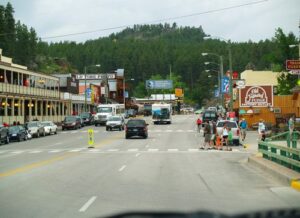
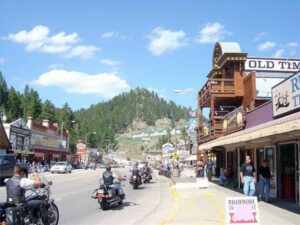 the best people there are. Those good old fashioned values, caring about your neighbors, helping others, and not looking at the color of someone’s skin, those are the kind of people I see in rural America. I wouldn’t want to live in a big city, because I think you lose a lot of that loving, caring lifestyle. That is what we need to work toward getting back in this country…a more caring lifestyle.
the best people there are. Those good old fashioned values, caring about your neighbors, helping others, and not looking at the color of someone’s skin, those are the kind of people I see in rural America. I wouldn’t want to live in a big city, because I think you lose a lot of that loving, caring lifestyle. That is what we need to work toward getting back in this country…a more caring lifestyle.
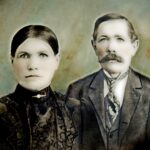
 My great grandparents, Carl and Henriette (Hensel) Schumacher were farmers, first in Minnesota and then in North Dakota, where they owned land in the famous Red River Valley. I had heard of the Red River Valley as a child, but only from the old song that bears it’s name. Recently, while preparing for a trip with three of my sisters; Cheryl Masterson, Caryl Reed, and Alena Stevens; to Wisconsin and deciding to go through Fargo, North Dakota to visit our great grandparents’ graves, I was reading through my great aunt Bertha (Schumacher) Hallgren’s journal to get more information, when I came across the fact that my great grandparents had actually lived in the Red River Valley when they moved to Fargo, North Dakota. For a farmer, to live in such a fertile area and not be able to farm the land must have been just awful.
My great grandparents, Carl and Henriette (Hensel) Schumacher were farmers, first in Minnesota and then in North Dakota, where they owned land in the famous Red River Valley. I had heard of the Red River Valley as a child, but only from the old song that bears it’s name. Recently, while preparing for a trip with three of my sisters; Cheryl Masterson, Caryl Reed, and Alena Stevens; to Wisconsin and deciding to go through Fargo, North Dakota to visit our great grandparents’ graves, I was reading through my great aunt Bertha (Schumacher) Hallgren’s journal to get more information, when I came across the fact that my great grandparents had actually lived in the Red River Valley when they moved to Fargo, North Dakota. For a farmer, to live in such a fertile area and not be able to farm the land must have been just awful.
They had farmed in the Lisbon, North Dakota area. Later they moved to Fargo, when Great Grandma became ill, and the family left the farm for good. For my great aunts, Mina (Schumacher) Spare and Elsa (Schumacher) Lawrence, the move to Fargo was a welcomed one. They never really loved the farming lifestyle, and they saw the move to Fargo as a definite “step up” in the world. For Bertha and Great Grandpa, it was one of the saddest moments in their lives. They loved the outdoors, farming, and especially the Red River Valley’s fertile ground. They would take walks in the spring, summer, and fall, walking two to three miles to the edge of town to look out on the fields of crops that grew in the Red River Valley. They always wished they could go back to farming, but Grandma needed to be in town and closer to medical care. It wasn’t just this illness that plagued her, but the fact that the last nineteen years of her life were spent in a wheelchair, that made the need for closeness to doctors and hospitals so important.
My guess is that both Great Grandpa and Great Aunt Bertha hoped that someday they might be able to move to the farmland of the Red River Valley, but I expect that they knew deep down inside that it was not to be. Great Grandpa was getting on in years, and grandma was never going to get well enough to move back to the country. The wheelchair was extremely limiting. Sadly, there was a medicine that came from Germany that was helping 
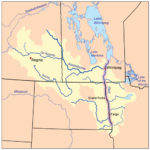 Great Grandma, but it became unavailable during World War I, so the doctor did other drastic treatments…electric shock treatments and drawing up the cords in her knees, which rendered her wheelchair bound for the rest of her life. For Great Grandpa and Great Aunt Bertha, they were thankful that they could walk out to the edge of town and see the Red River Valley, but always sad that they could not walk those crop fields and dig in the fertile dirt there. They would always miss farming.
Great Grandma, but it became unavailable during World War I, so the doctor did other drastic treatments…electric shock treatments and drawing up the cords in her knees, which rendered her wheelchair bound for the rest of her life. For Great Grandpa and Great Aunt Bertha, they were thankful that they could walk out to the edge of town and see the Red River Valley, but always sad that they could not walk those crop fields and dig in the fertile dirt there. They would always miss farming.

